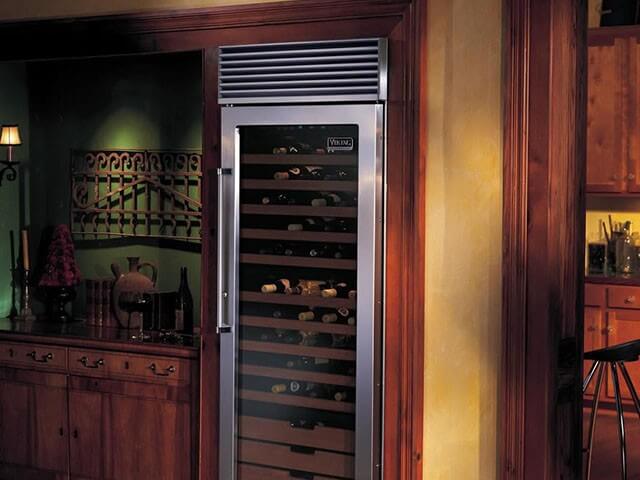Reasonable Viking Wine Cooler Repair

Wine coolers are a great addition to the kitchen appliance for both collectors and oenophiles. A wine cooler unit will constantly store your wine fresh. They are designed for temporary storage that makes them practical for storing handy wines you want to drink in a few weeks or months.
When it breaks down, fixing your wine cooler is a major work, especially when you have a wine collection in it that may be spoiled. If you are seeking a reliable wine cooler repair service, Viking Wine Cooler Repair can provide clients with a prompt, quality, and affordable wine cooler repair work. Our experts can do a same-day solution for wine cooler repair needs. There is no job that is too big or small, and each repair service gets the professional attention it deserves.
With regular use, your wine cooler unit can go through several issues that may require comprehensive maintenance or repair. We offer a full repair service with the best service part warranty for whatever issues your wine cooler unit is going through:
- inaccurate temperature
- not cooling unit
- water droplets formation
- fluid buildup under the wine cooler
- ice in the back panel
- malfunctioned cold control unit
- noisy or overheating compressor
- compressor change
- faulty evaporator coils
- gas filling
When Viking Wine Cooler Stops Working
Usually, Viking consumers review the high quality of its appliance units and their life. However, even durable appliances can break over time. There is actually no need to be frustrated since due to the years of service of the Viking Company on manufacturing high-quality electronic appliance units in the market, you can definitely find the Viking wine cooler repair service providers around the country. Therefore, you can locate the Viking wine cooler repair technicians easily.
The repair service providers are experts of the job, and have been highly trained and certified by Viking to provide you with the best repair service. Before contacting the Viking wine cooler repair technicians, you should first look at the details of the problem and take appropriate actions. You may find action plan guides on the manual that was given to you when you purchased the wine cooler unit.
Viking Wine Cooler Repair has provided years of excellent services, along with the well-pleased customers and service reviews. Getting a repair does not always require a great deal of money, and it all depends on how prompt you to act on the issue. Take the pleasure of each glass of your refreshing wine, and brush off all of the worries in life. Also, check out Viking Microwave Repair.
Services from Viking Appliance Repair are trusted, reliable and professional.

